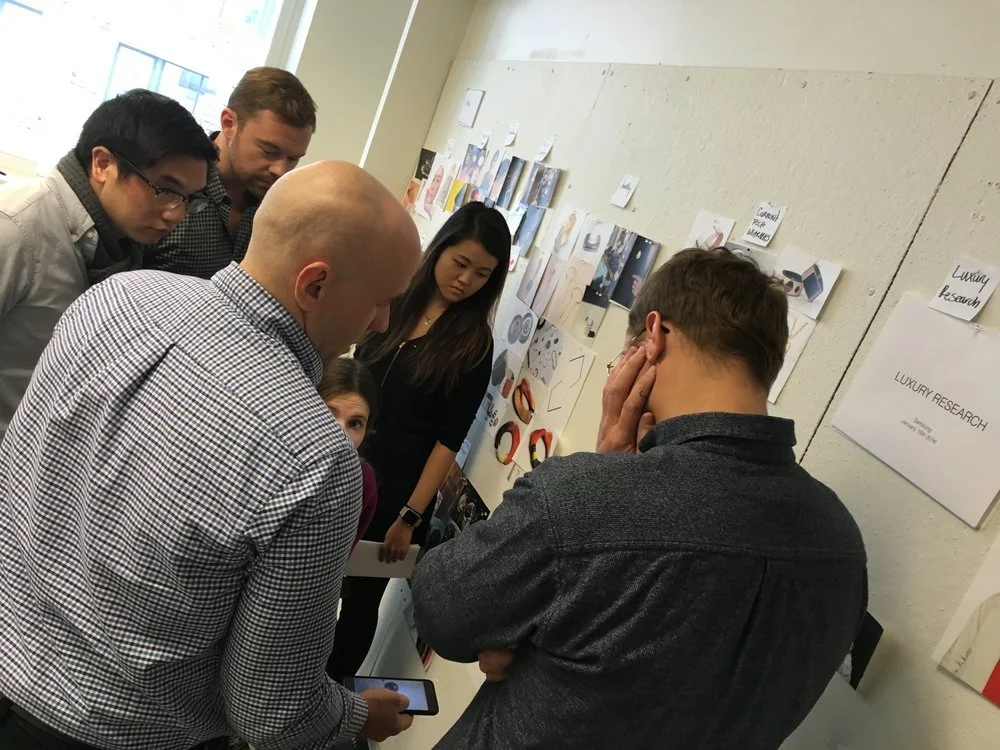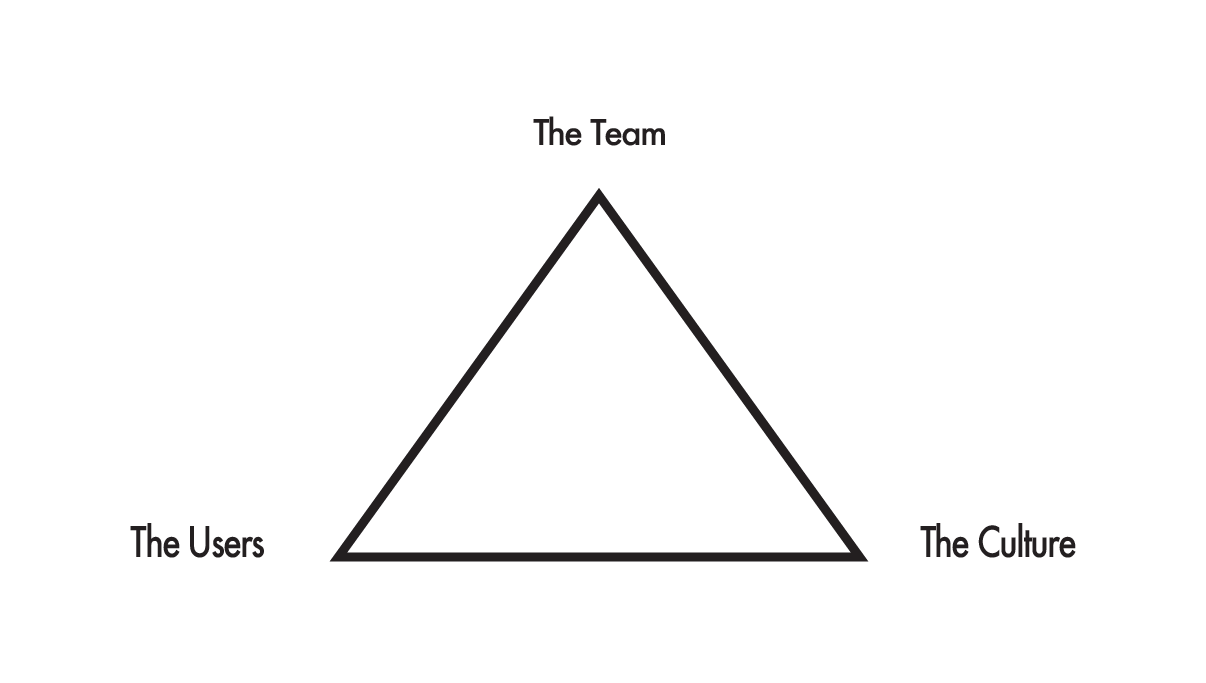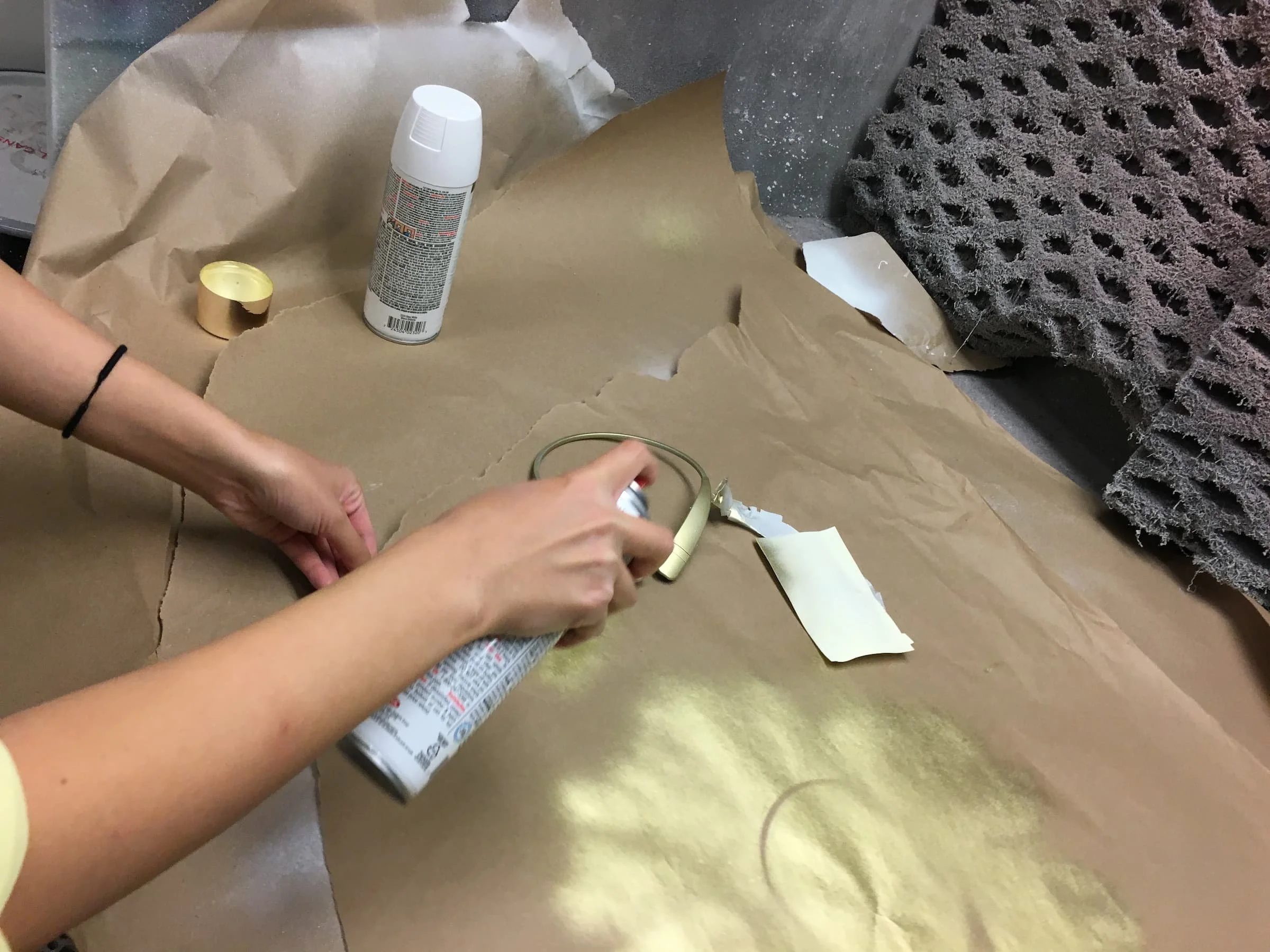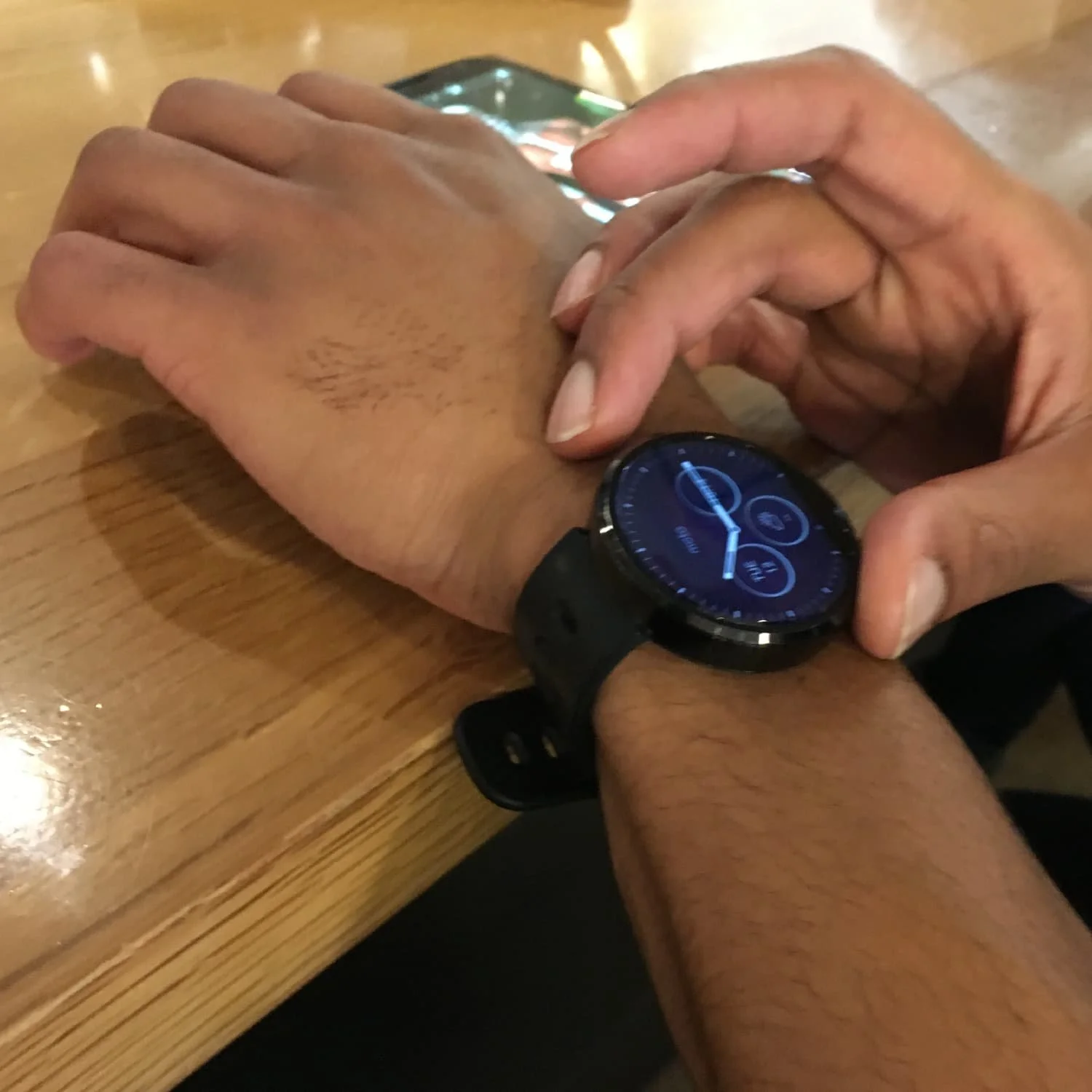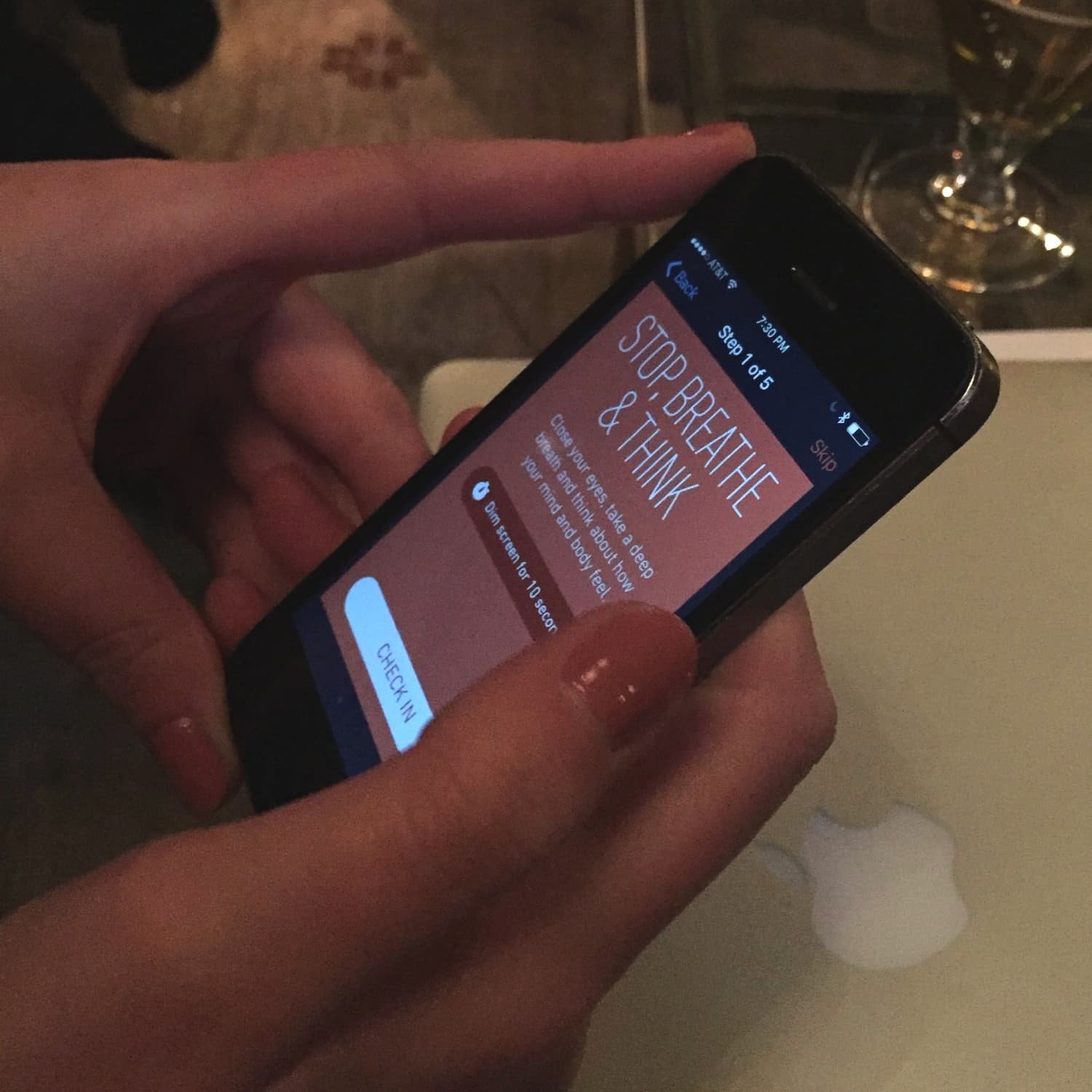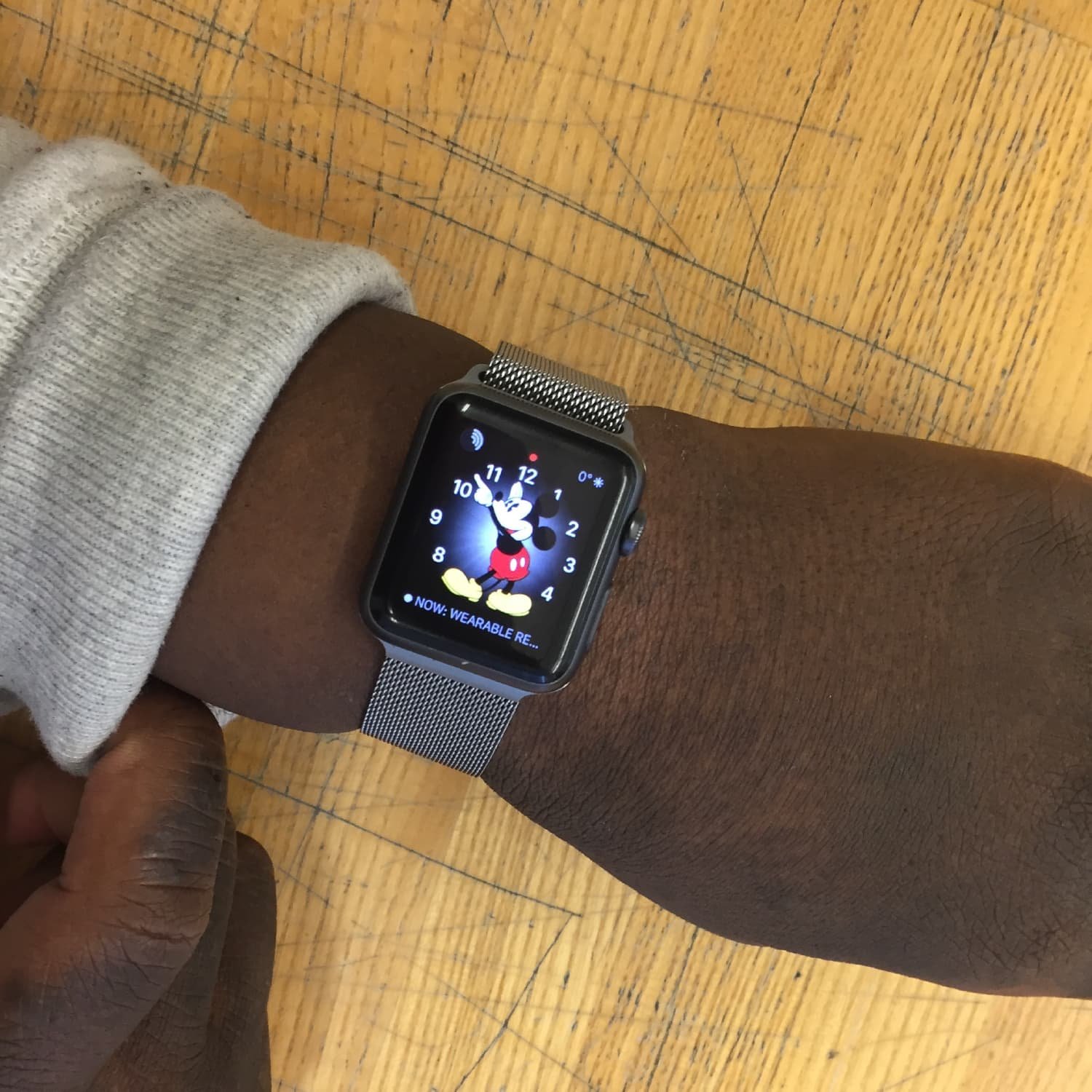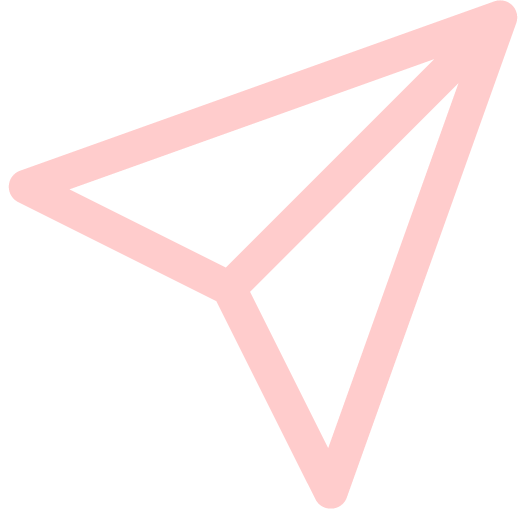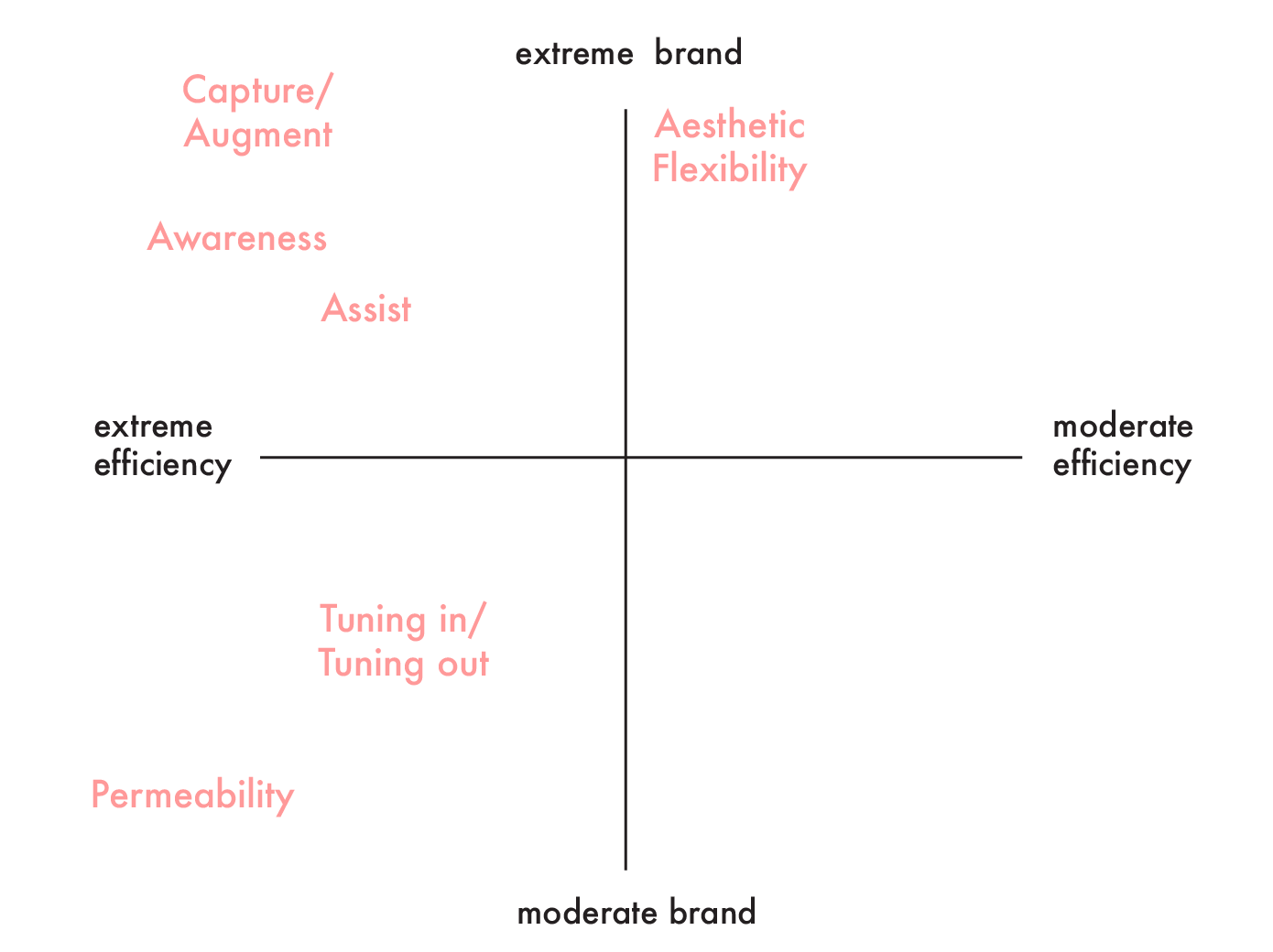
Samsung Design Research
Case Study
Role
Contractor Designer + Researcher
Team
Julka A. – Project Lead
Peter Z. – Research Lead
Kathie C. – Designer + Researcher
Julia G. – Designer + Researcher
Chester O. – Designer + Researcher
Kempe S. – Designer + Researcher
Type
User Interviews
Competitive + Comparative Analysis
Affinity Mapping + Synthesis
Sketching + Ideation
Concept
Personas
Overview
Focusing on Millennials, wearables, fashion and luxury, I was part of a team to develop new wearable platforms.
The goal was to find a new wearable platform that combines both fashion and function that users desire to wear everyday into innovative design concepts and opportunities for new consumer electronic products and mobile technology use.
We synthesized research from local Chicago Millennial participants into design opportunities through interviews with quick prototypes, testing existing wearable technology, trend research in fashion, societal movements, and technology. With brainstorming sessions with my team and with members of the Samsung Design Team, we created product concepts used to inform the future design of mobile electronic technology and devices.
Final concepts presented to Samsung were used to inform the future design of mobile electronic devices.
Background
To develop a new wearable platforms as a fashionable yet functional icon.
People wear accessories on their body for different purposes. Bangles, rings, necklaces, earrings and more, have been extending their functionality beyond just fashion.
We would like to find a new wearable platform that combines both fashion and function that users which desire to wear everyday.
Research
Our research took place in Chicago, a city that is hip, has a large population of millennials, and represents mainstream America.
We focused on understanding the relationship millennials have to technology, fashion, and luxury.
Questions
How do millennials perceive the relationship between fashion and technology?
How do wearables fit into the millennial lifestyle?
How do millennials define luxury?
Approach to Design Research
These are the three perspectives we considered during the design research and synthesis phase of this project. Wearable technology was considered in each of these contexts.
Team: What can we learn from engaging with wearable tech products, services, and through experiences? How can we learn through these experiences and get inspired to create new designs?
Users: Engaging with users is an excellent way to understand their needs and desires. Through interviews and observations, we can understand their behaviors, values, and beliefs. While most design research primarily focuses here, this ought to be only one component of the research. People can teach you what they want now, but they may not know what is possible in the future.
Culture: What if we look out into the world and in our culture to understand what is happening now and any important shifts that are relevant to this project? What is happening next? What are people reacting against? It is also important to look at the competitive landscape and some analogous industries to know what is out there, what has failed and succeeded and why.
Early Hypotheses +
Lo-Fi Prototypes
To develop early hypotheses, we:
experienced wearables
conducted secondary research
explored the competitive landscape
We created lo-fi prototypes from initial hypotheses. Their purpose was to generate interview discussions.
Research Participants
We selected 12 millennial-aged participants (21-24) who have varied and busy lives.
We specifically recruited active millennials who have a variety of relationships with technology and wearables. We also looked for a wide range of behaviors like those who are: physically active, have very busy work lives (including some who work from home), are single, in relationships, and are frequent traveler, and we wanted a variety of fashion styles.
Participant Key Quotes:
Participant #1
“It is very important for me to create a strict boundary between work and leisure.”
Participant #3:
“Luxury is not worrying about money, ordering GrubHub every night, and taking Uber everywhere.”
Participant #2
“I chose the Bellabeat Leaf wearable because it’s. apiece of technology that looks like jewelry. I’m not attracted to the industrial, masculine aesthetic.”
Participant #4:
“Luxury is offloading decisions to an expert whose taste you trust and admire.”
Participant #5:
“As a nurse I can’t use my phone at work, so I like that my wearable device can provide me with discrete notifications that don’t overwhelm me.”
Participant #6:
“I strive to celebrate the everyday with moments of delight.”
Participant #7:
“Being single I often feel lonely, but I still don’t have enough ’me time’.”
Participant #8:
“I’m looking for a device that is plug and play. I don’t want to read the instruction manual.”
Participant #9:
“Technology allows you to cognitively offload so that the brain is open for creative tasks.”
Participants #10 + #11:
“It’s important for us to disconnect from our technology when we’re at home so that we can focus on spending time together.”
Participant #12:
“I take a lot of photos to remember things, and would love to have a camera that captured everything for me so that I can stay present.”
Millennial Fashion +
Tech Personas
-
Quirky Modern Hippies are interested in self expression and creativity. They are cultural explorers who steer clear of the mainstream by seeking out unique products and experiences. They are always focused on documenting their lives in a more artistic of self-reflective way. Technology is not a hindrance to their self-expression, rather it is an important vehicle for experimentation.
-
Hip Techies are early adopters of technology and like to be in the know about the latest developments so that they can stay on the cutting edge. Because they possess a deep understanding of technological engineering, they are very discerning about which devices and programs they invest in. Speed, efficiency and customizability are crucial qualities for this demographic.
-
Corporate Achievers are ambitious young professionals with high-earning potential. They lead busy lifestyles and travel often, and need their technology to support them in all facets of their lives. Consolidation and efficiency are key. Social and meditative apps help them to maintain balance.
-
Social Medialites are cultural influencers due to their heavy social media use and large followings. They are extremely aware of their appearance and use it to their benefit. Often making profits off of their popularity by promoting brands, these users are financially reliant on the successful operation of their smart phones.
-
Bohemian Athletes are interested in health, fitness, and mindfulness. Not necessarily competitive, they value balance and strive towards maintaining an active body and peaceful state of mind. The best technology will help to balance stressful activities with space to breathe.
-
Cultural Curators have distinctive taste and an appreciation for the arts. They immerse themselves in beautiful spaces and desire elegant objects and technology. They strive towards celebrating the everyday and want their technology to simplify their notifications whilst providing moments of delight.
Core Themes
Millennial Values and Needs: Managing Technology
Tangled Up in Tech
Millennials feel tangled up in their technology.
They are managing multiple devices, and wearables just add to the complexity.
Tangled Up in Communication
Millennials are also tangled up in communication. They have multiple streams of conversations to manage.
Example: Texts, emails, dropbox, calendar reminders, Instagram, Snapchat, Google Docs, Facebook, Slack channels, appointment alerts, etc.
Key Insights:
There is a strong desire for consolidation, and in some cases dematerialization.
Millennials want all the benefits of technology, and from being connected, but they want to simplify.
In some ways, technology simplifies life, but it has started to complicate it.
Wearables, especially, have the potential to add complexity.
What are millennials doing (or want to do) to manage the complexity?
Managing Technology
There are behaviors emerging around the creation of boundaries to make space between different parts of life.
Outsourcing become a way to manage overwhelm and to get help with tasks. This is done both through services and software.
Millennials want breaks from their busy lives. They do activities that give them a break. They are also using their devices to help them relax.
Millennials Values and Needs: Managing Personal Brand
Public Personas
Millennials want to be seen and heard.
They spend a tremendous amount of time crafting public personas through documenting and sharing images and thoughts.
Managing/Creating Public Personas
Millennials spend a lot of effort crafting public personas and creating their personal brands. This is important because they want to be seen, and to express their identity
There is an obsession with Instagram, and with documenting life. While much of this happens on the phone, people don’t always want to miss the moment by having their phones in front of them.
Summary Lifestyle Themes
How Millennials Define Luxury
Luxury varies tremendously across culture and people. Here we are discussing luxury from the point of view of mainstream American millennials.
For Millennials luxury is more about the holistic experience than the object, and is felt through services and experiences.
Opportunties Exploration:
While materials and the design matter, they are not what brings value to millennial’s life. Higher cost items MUST bring value to their life.
There is opportunity for wearable tech that is higher cost.
They can be beautiful, but also must have great purpose.
Quality of materials must always be balanced with function and served experiences.
Millennial Values and Needs: Aesthetics/Beauty
Discussions of tech and fashion led to jewelry, and issues of aesthetics and beauty.
Body Adornment + Tech
There is tension in the jewelry/tech space.
The primary mental model for jewelry and tech has been watches .
Jewelry is either worn all the time (because it’s meaningful) or it is switched out a lot because it is part of an outfit.
Either way it creates a tricky space for wearables. It is expensive to buy multiple wearables, and the heirloom investment pieces are a challenge because of the rapid obsolescence in technology.
Design Opportunities
Five opportunity areas emerged from themes, and in the creative ideation session with Samsung.
Design Principles
We created four main design principles based on our interviews and research synthesis to base our design concepts.
Flexible
Customizable
Versatile
Open
Adaptable
Feels Personalized
Evolves
Consolidated
Filtered
Bundled
Centralized
Manageable
Organized
Aligned
Purposeful
Directed
Efficient
Intentional
Deliberate
Reliable
Remarkable
Unique
Delightful
Gratifying
Considerate
Attentive
Design Concepts
Capturing/Augmenting
How can we help millennials more seamlessly experience and capture their daily lives?
Flexibility
How can a daily-wear device allow millennials to express their personal brand?
Tuning In / Tuning Out
How do we help users tune in or tune out at the right moments?
Assisting
How do we move beyond assessment?
How can wearables assist users?
Permeability
How might millennials move more seamlessly through their day?
What might allow them to less frequently remove wallets and phones from pockets?
Awareness
What if wearables can becomes aware of you, your behavior, your surroundings and then adapt to your needs?

